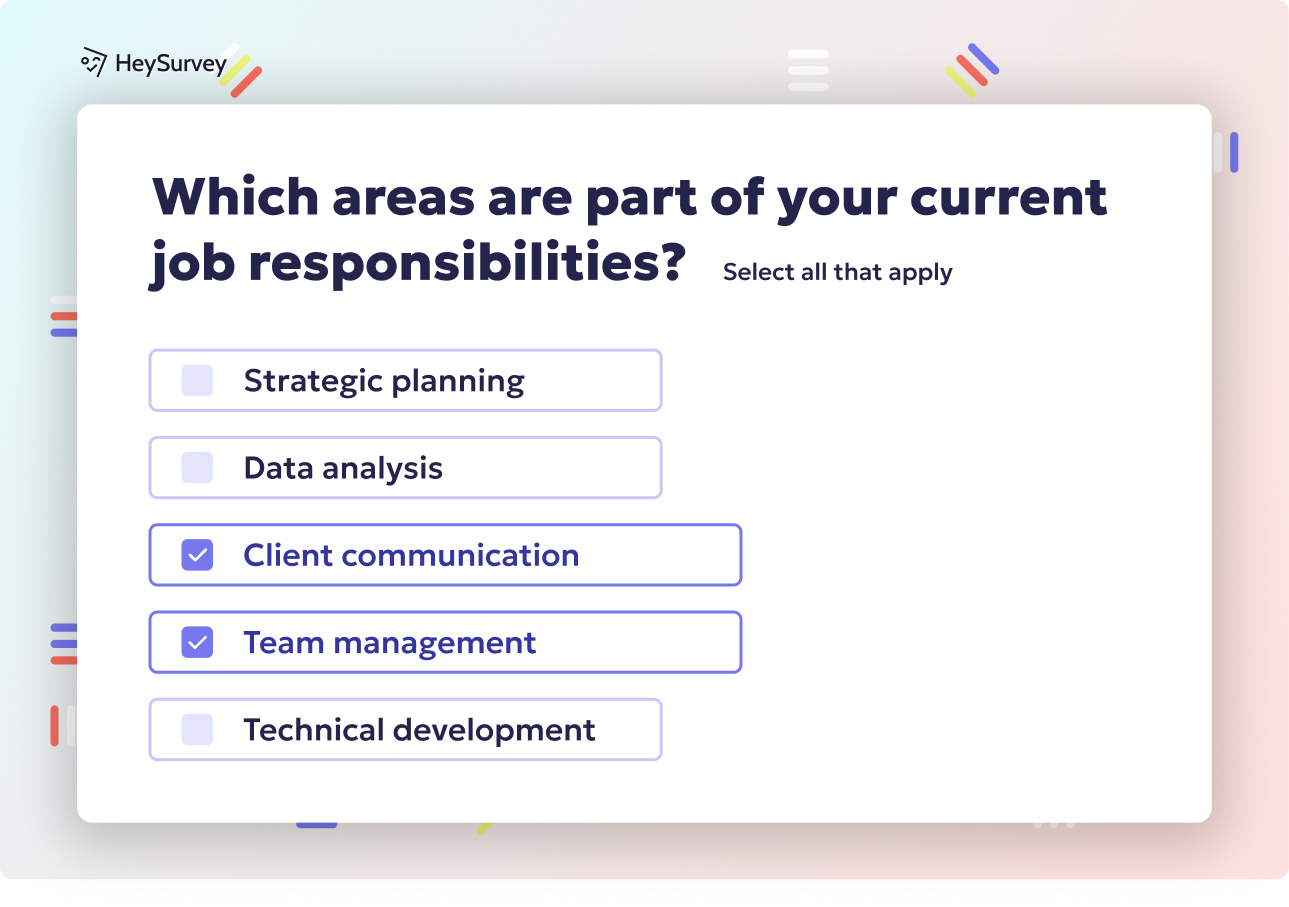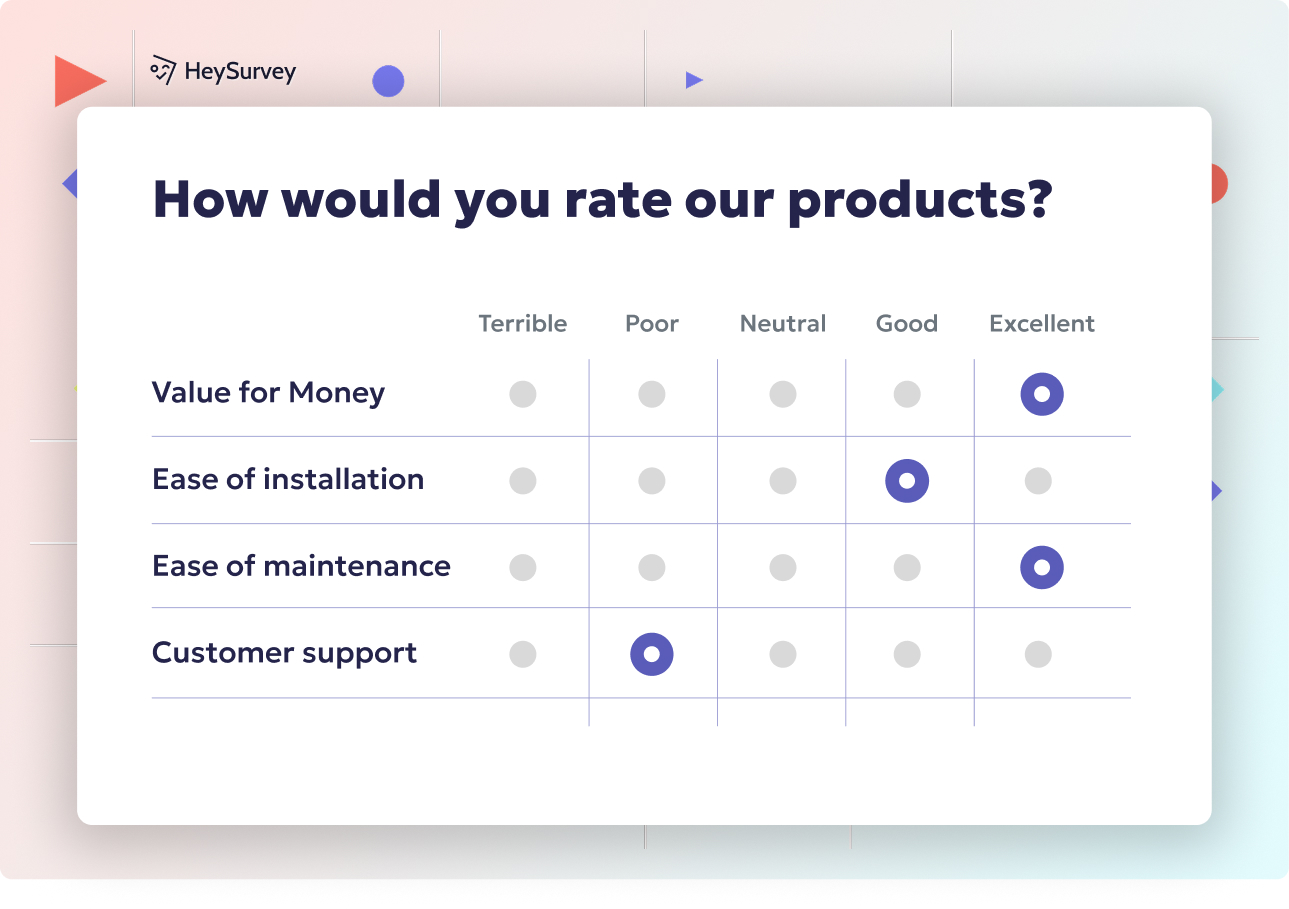32 HR Feedback Survey Questions to Gain Actionable Insights
Discover 25+ HR feedback survey questions covering onboarding, engagement, performance, and more to gather actionable employee insights.
HR Feedback Survey Questions: The Complete Guide to Gathering Actionable People Insights
HR feedback surveys are the behind-the-scenes heroes of thriving companies: they uncover hidden needs, untangle culture knots, and power up your people engine. From welcoming new hires to bidding fond farewells, knowing when—and how—to ask the right employee feedback questions can transform your HR strategy from guesswork into gold. Let’s hand you the ultimate HR survey template for every moment that matters.
Introduction: Why HR Feedback Surveys Matter & When to Deploy Them
The Strategic Role of HR Feedback Surveys
Understanding employee sentiment is the secret weapon for every high-performing HR team. HR feedback surveys unlock real, raw insights—helping companies improve the employee experience, supercharge retention, and shape a winning culture. By making employees feel heard, you’ll strengthen loyalty and spark greater productivity.
Different types of surveys—each with its own flair—add distinct value. Ad-hoc surveys swoop in for urgent topics or one-off events. Pulse surveys offer quick, frequent health checks. Deep-dive surveys take a panoramic view, unpacking critical themes deeply, like engagement or DEI. Knowing the difference is half the battle.
Common triggers for launching an HR survey make timing everything. Consider rolling out surveys when there’s a new policy, during key lifecycle milestones (like promotions, onboarding, or exit), or as part of annual compliance and culture health checks. This smart sequencing ensures you’re always one step ahead.
Organizations with effective feedback mechanisms report a 14.9% lower turnover rate, highlighting the importance of HR feedback surveys in enhancing employee retention. (psico-smart.com)

How to Create Your HR Feedback Survey with HeySurvey in 3 Easy Steps
Ready to capture actionable insights using HeySurvey but not sure where to start? No worries! Follow these simple steps to get your survey up and running in no time.
Step 1: Create a New Survey
- Log in to HeySurvey (or start without an account to experiment).
- Click Create Survey and choose either an Empty Sheet for full customization or select a Pre-built Template tailored to HR surveys (you can open the HR feedback survey template with the button below this instruction).
- Enter a survey name—make it something clear like “Employee Engagement Survey” or “Onboarding Feedback Survey.”
Step 2: Add Your Questions
- In the Survey Editor, click Add Question to insert your employee feedback questions.
- Choose question types that fit best: multiple choice for simple selections, scale for satisfaction ratings, or text for open-ended comments.
- Input the sample questions from your guide, or customize them to match your company’s needs.
- Mark questions as required to ensure no vital feedback slips through.
Step 3: Publish Your Survey
- Preview your survey to see exactly how employees will experience it across devices.
- When you’re happy, hit Publish to generate a shareable link.
- Share the link with your employees via email, intranet, or any communication channel of your choice.
Bonus Steps for a Polished Survey Experience
Apply Branding:
- Open the Branding and Settings Panel to upload your company logo.
- Customize colors, fonts, and backgrounds using the Designer Sidebar to make the survey feel truly yours.
Define Settings:
- Set survey start and end dates to control availability.
- Limit the number of responses if needed to cap participation.
- Add a completion Redirect URL or let employees view summarized results if appropriate.
Use Branching to Personalize:
- Set up logic paths so employees see only relevant questions based on their previous answers.
- Define multiple endings to tailor the thank-you message for different respondent groups.
With HeySurvey, creating a professional, engaging HR feedback survey is simple and intuitive—just follow these steps and get ready to gather insights that drive real change!
[Open HR Feedback Survey Template]
Employee Onboarding Feedback Surveys
Why & When to Use
The first impressions of a new hire last forever. Onboarding feedback surveys help you catch concerns early, fix onboarding roadblocks, and shape that all-important initial experience. Deploying these within the first 30–90 days lets you discover which processes sparkle and which fall flat.
Accelerating time-to-productivity is every HR pro’s secret ambition. Asking new employees directly about their journey helps unearth skill or culture gaps before they become retention risks. You’ll spot misunderstandings about roles or training needs before they result in disengagement.
Launching a “new hire onboarding survey” after induction makes bridging expectation gaps a breeze: - Get honest—and immediate—feedback before little issues turn into flight risks. - Celebrate wins with mentors, buddies, and trainers. - Pinpoint where new joiners need better support, clarity, or resources.
Sample Questions
How satisfied are you with the communication you received before your start date?
Were your role expectations made clear to you in your first week?
Did you find the training materials and resources effective and easy to access?
How comfortable do you feel with the company culture so far?
What level of support have you received from your assigned mentor or buddy?
Organizations with strong onboarding processes can improve new hire retention by up to 82%. (apps365.com)
Employee Engagement & Morale Surveys
Why & When to Use
Engaged employees are your best brand advocates. These surveys, run quarterly or bi-annually, give you a temperature check on discretionary effort and emotional connection—signs of a healthy company heart.
Pinpointing engagement drivers means fewer costly surprises. You’ll know if your recognition program is boring or if that “wellness week” actually works. Plus, morale dips can’t hide for long under the right feedback microscope.
Quarterly or bi-annual engagement surveys are smart because: - Fluctuations in morale appear before they wreck team spirit. - Results steer HR investments in recognition, growth, or mental health. - Employees feel valued just by being asked, boosting trust.
Sample Questions
How proud are you to work at this company?
How likely are you to recommend our company to friends?
Do you feel your work has a meaningful impact on our success?
How often do you feel recognized for your contributions?
Is your workload balanced and manageable?
Performance & Manager Feedback Surveys
Why & When to Use
Performance reviews aren’t a one-way street. Upward feedback surveys, sent after review cycles, increase manager accountability and help fine-tune coaching styles. This is your chance to flip the switch—managers grow when they get honest, actionable feedback.
Boosting managerial effectiveness turns average teams into dream teams. When employees feel safe sharing their views, leaders discover if their style inspires effort or just stirs skepticism. That’s a fast track to better goal-setting—and happier teams.
Smart organizations launch these surveys: - Following annual, mid-year, or quarterly performance cycles. - To catch gaps in feedback, goal clarity, and communication. - When wanting to foster a culture of honest, two-way dialogue.
Sample Questions
How clearly does your manager communicate team goals?
Do you feel the feedback you receive is fair and constructive?
Are you given opportunities to grow within your role?
How would you rate your manager's communication style?
Is your manager approachable and accessible when needed?
Upward feedback surveys, when well-structured and consistently implemented, significantly enhance managerial performance and team dynamics. (iaap-journals.onlinelibrary.wiley.com)
Learning & Development Needs Assessment Surveys
Why & When to Use
Learning and growth are the fuel for innovation and retention. These surveys identify hidden skill gaps before you invest in training—or gauge the ROI of the programs you offer.
Annual training plans should never be based on last year’s guesswork. Find out exactly what learning formats people love, and if your leadership pipeline dreams match reality. Survey before rolling out a program, and again after, for the full learning journey picture.
Why run a needs assessment survey? - Tailor investments to what employees genuinely need. - Surface obstacles like poor access, confusing content, or lack of time. - Boost engagement by involving employees in their own development.
Sample Questions
Which learning formats (e.g., in-person, online, blended) do you prefer for skill-building?
How confident do you feel in your current skillset related to your job?
Would you be interested in training for leadership or management roles?
How relevant do you find the courses currently offered by the company?
What are your biggest barriers to participating in learning opportunities?
Compensation & Benefits Satisfaction Surveys
Why & When to Use
Money talks—but fairness shouts even louder. Compensation and benefits surveys benchmark how well your company stacks up, tracking satisfaction across pay, perks, and flexibility. Deploy them ahead of raises, bonus cycles, or benefits renewal.
Knowing what matters lets you invest where it counts. Is base pay your pain point, or do employees crave extra perks? Spotting these trends before annual budget meetings helps HR make enticing, strategic offers.
Key times to roll out these surveys: - Prior to annual salary or compensation reviews. - Following changes in benefits or perk offerings. - When competitive benchmarking is needed for retention.
Sample Questions
How satisfied are you with your base salary?
How well do you understand your bonus or incentive structure?
How would you rate the value of our health benefits package?
Is information about our retirement or pension plan clear and easy to access?
Are there any additional perks or benefits you would like to see offered?
Diversity, Equity & Inclusion Climate Surveys
Why & When to Use
A sense of belonging powers real innovation. DEI climate surveys help you track progress (or setbacks) in creating an equitable, welcoming workplace. Deploy annually or after every major DEI initiative to measure what’s working and what’s not.
When employees trust their voices will be heard, inclusion thrives. These surveys capture sensitive, vital signals like representation, respect, and safety to speak up—fueling data-driven changes.
Great reasons to run a DEI survey: - After piloting new inclusion training or affinity groups. - When updating policies on bias, bullying, or reporting. - For annual progress reviews tied to company goals.
Sample Questions
Do you feel you have equal access to development and advancement opportunities here?
Are diverse perspectives and opinions respected and valued in your team?
How comfortable are you reporting incidents of bias or unfair treatment?
Do you feel our leadership group is reflective of our overall workforce diversity?
How effective have you found our DEI programs and initiatives?
Exit & Offboarding Feedback Surveys
Why & When to Use
All endings are beginnings for better employee experiences. Exit feedback surveys capture deep insights from departing talent, revealing root causes of turnover and warning signs you can’t afford to miss.
These surveys are essential brand insurance. They help you protect your employer reputation by acting on honest, sometimes uncomfortable truth bombs. Smart organizations use them after every resignation or voluntary departure.
Use offboarding surveys to: - Identify why great people are leaving. - Reveal blind spots in management or workflow. - Uncover whether former employees would ever “boomerang” back.
Sample Questions
What was the primary reason for your decision to leave the company?
How would you describe your relationship with your direct manager?
Were there sufficient opportunities for growth or advancement?
How would you rate the company’s workplace culture?
Would you consider returning to this company in the future?
HR Pulse Surveys for Continuous Improvement
Why & When to Use
Pulse surveys are your HR crystal ball. Regular, recurring surveys spot trouble early—long before you see it in turnover stats. Deliver these monthly or even bi-weekly for a constant read on morale, stress, and leadership trust.
Quick, focused, and totally adaptable, pulse surveys give you rapid trend data. Use them to assess everything from workload to recognition cadence, so you can troubleshoot before little issues snowball.
Why pulse surveys are your secret HR asset: - Keep a finger on the team’s morale and workflows. - Quickly gauge the success of new initiatives or sudden changes. - Uncover trends over time for proactive decision-making.
Sample Questions
How would you rate your current stress level related to your workload?
Are your weekly priorities and goals clear?
Have you received any recognition for your work in the past two weeks?
How would you rate collaboration within your team this month?
Do you have confidence in our leadership’s recent decisions?
HR Feedback Survey Best Practices: Dos & Don’ts
Dos
The best HR surveys keep it simple and actionable. Use clear, concise questions that actually align with business goals, not just HR jargon.
Protect anonymity at all costs—confidentiality boosts honesty. Make it mobile-optimized, too, so every employee can access it anywhere.
- Align survey timing and content with major business moments.
- Always close the feedback loop by sharing results transparently.
- Benchmark trends over time for sharper insights and improvements.
Don’ts
Don’t turn feedback into a homework assignment. Avoid unnecessary jargon, double-barreled or leading questions that bias results.
Sensitive data is a no-go unless it’s truly essential and collected ethically. Never delay sharing results—inaction erodes trust faster than a missed payday.
- Don’t overload with questions; keep surveys snappy and relevant.
- Don’t forget to get consent for collecting personal or sensitive information.
- Don’t skip optimizing for mobile or forget accessibility needs.
Related Employee Survey Surveys
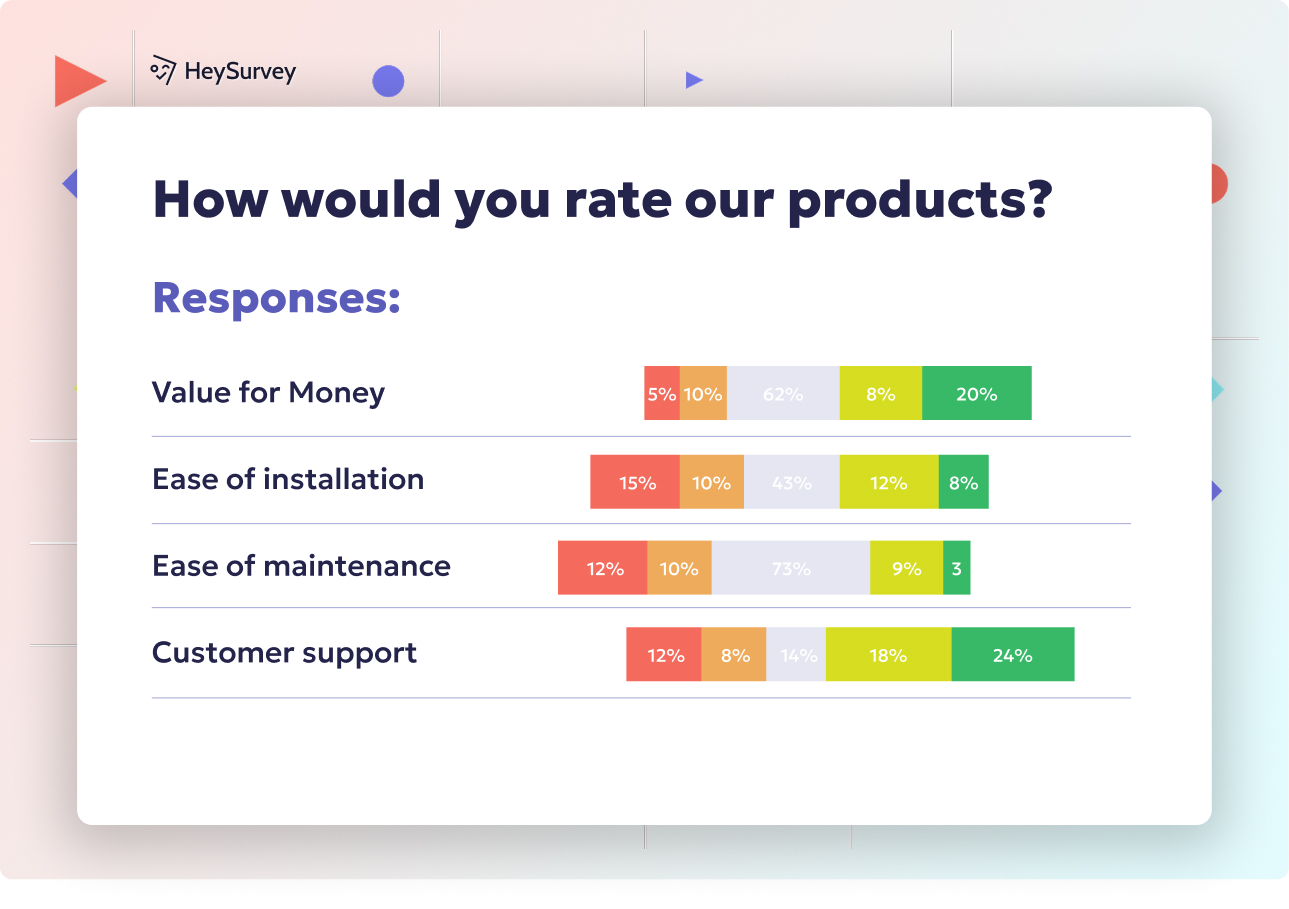
29 Essential Post Mortem Survey Questions for Project Success
Discover 25+ essential post mortem survey questions to improve projects, boost team morale, and d...
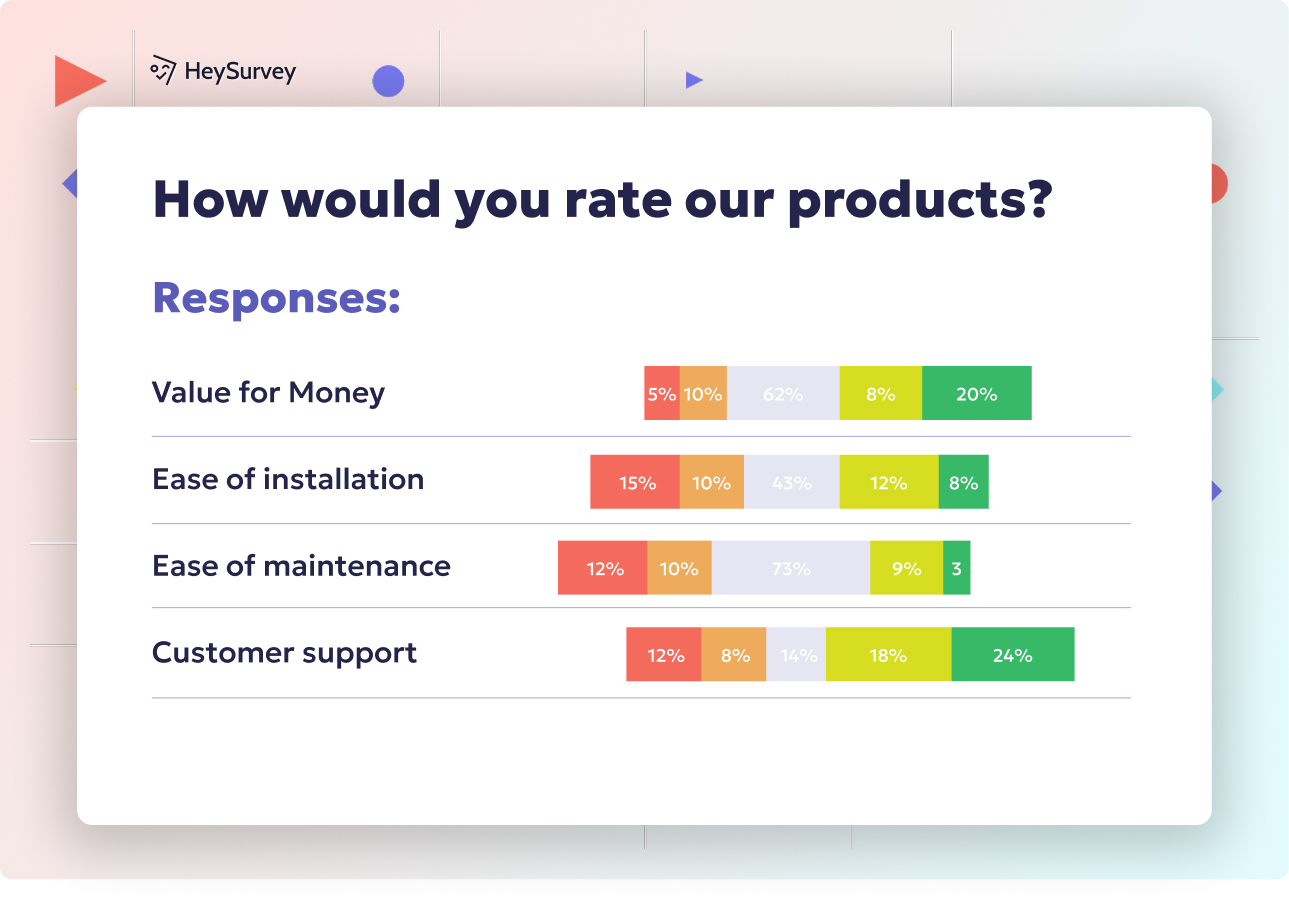
31 Change Readiness Survey Questions to Boost Your Success
Discover 25+ sample change readiness survey questions to assess attitudes, barriers, and confiden...
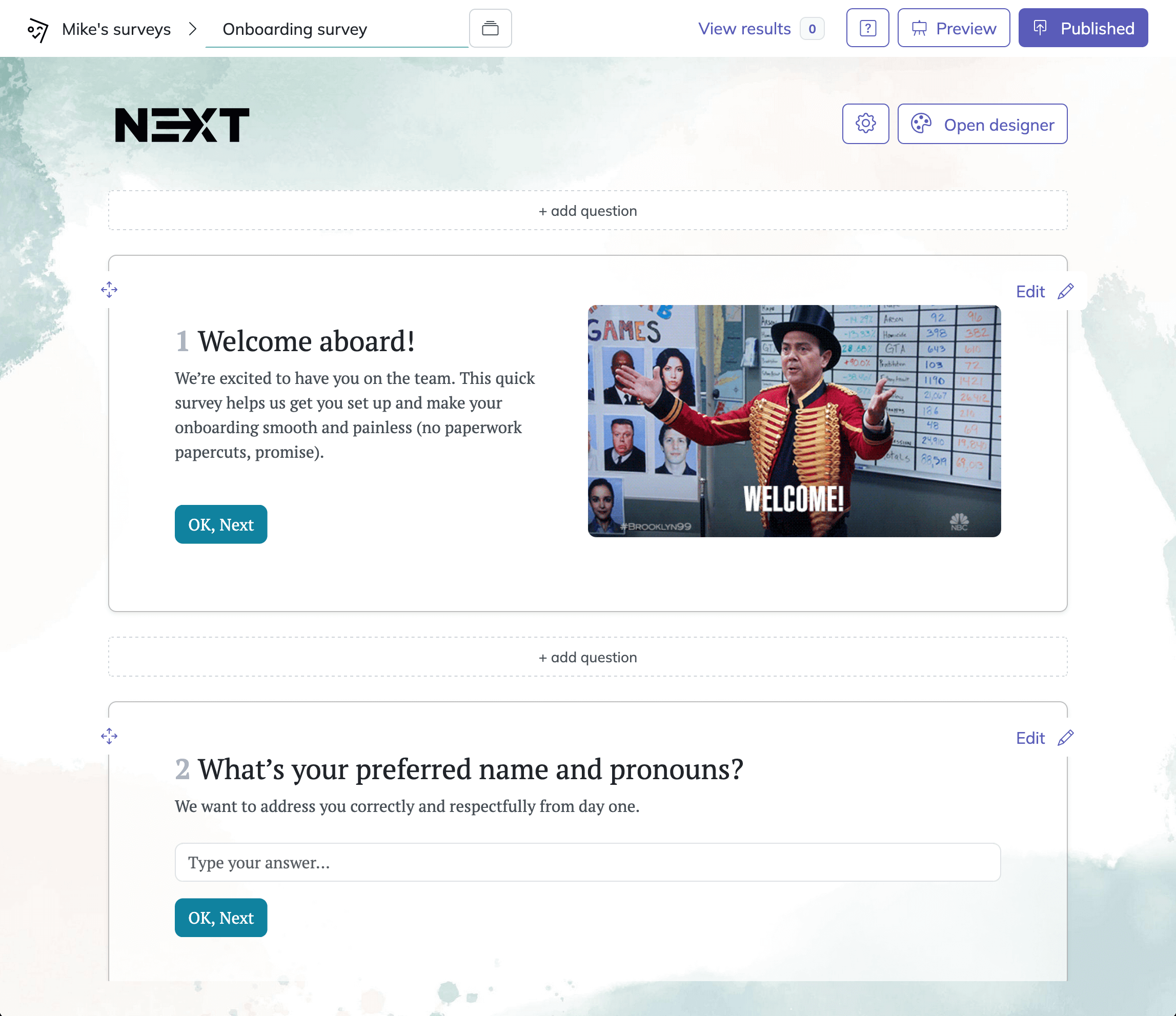
31 Retreat Survey Questions to Collect Actionable Feedback
Discover 26 essential retreat survey questions to gather actionable feedback before, during, and ...
